Our 2011 Eastern Europe Trip
Part 2 - Page 4
The Roland Fountain (sometimes referred to as the Maximilian Fountain) is the most famous fountain in Bratislava, Slovakia, as well as one of the city's important landmarks. It is located in the Old Town, in the Main Square.
Its construction was ordered by Maximilian II, the king of Royal Hungary, in 1572 to provide a public water supply. The fountain is topped by a statue of Maximilian portrayed as a knight in full armour. It is one of the downtown's favorite meeting points. Many legends are centred around this fountain, mostly featuring Maximilian as the town's protector. Hubris never changes!
This is a "local" posing as a peasant (I guess). The other is a tourist posing as a tourist. They both look a little silly.
This fuzzy crowd is waiting for our Spaghetti alla Bolognese lunch in a nice little restaurant in downtown Bratislava. You know everyone except for Domingo and Rosa Farinas from Los Altos, CA. These folks are Argentinians living in the US. Domingo and I had fun speaking Spanish. He was very patient, but without my hearing aides, I had some difficulty with my španielcina (Spanish, in Slovak).
This is the Dorint Hotel in Prague, Czech Republic. Our last city on our tour. We were quite a way from the "Old Town" but the hotel was fine and there was a Metro stop right outside the hotel Our room was fine, too. (Note my CPAP machine. I lugged it all over Eastern Europe).
Here is the entrance to the Metro. Down a long, long, fast escalator. If you wern't paying attention, you'd get thrown off at the bottom. We were on our way to town for a quick orientatin and to get some korunas (that's the Czech currency).
Here we are at a locacal restaurant. Guess what it is called? The Three Pigs. Guess what was their main menu item? Pork and cabbage. We had supper with a couple of glasses of a famous Czech lager: "Pilsner Urquell – The pure, original pilsner from Pilsen, CZ".
Here are a couple more of our tour companions: Jim and Marian Wrobbe from St Louis, MO. I asked for mustard and the waitstaff had a big conference. Finally, they brought me a little saucer with a dab of mustard - and charged me for it. I should have asked for horcica , I guess. Anyway, the food and company were great!
The next day, we took our usual bus tour of the city. This is the Czech National Museum. The main museum building was built by from 1885 - 1891. The building was damaged during World War II in 1945 by a bomb, but the collections were not damaged because they had been moved to other storage sites. The museum reopened after intensive repairs in 1947. During the 1968 Warsaw Pact (Soviet) intervention the main facade was severely damaged by strong Soviet machine-gun and automatic submachine-gun fire. The shots made numerous holes in sandstone pillars and plaster, destroyed stone statues and reliefs and also causing damage in some of the depositaries. Despite the general facade repair made between 1970 - 1972 the damage still can be seen because the builders used lighter sandstone to repair the bullet holes. We didn't have time to go in.
This is the the St Vitus Cathedral on the grounds of the Prague Castle. The current cathedral is the third of a series of religious buildings at the site, all dedicated to St. Vitus. The first church was founded by Wenceslaus I, Duke of Bohemia in 925. This patron saint was chosen because Wenceslaus had acquired a holy relic — the arm of St. Vitus — from Emperor Henry I. It is also possible that Wenceslaus, wanting to convert his subjects to Christianity more easily, chose a saint whose name sounds very much like the name of Slavic solar deity Svantevit (Huh? Sounds like?). The arm is some where here in the vaults.
This is the inside of the Cathedral. Massive, high, and impressive! Lots of stained glass windows and statuary.
Work on the Cathedral progressed off and on until the late 1800's. It was finally "finished" by two architects Kamil Hilbert and Josef Mocker who immortaize themselve on the facade of the Cathedral. No flies (or pidgeons) on these guys!
The entrance to the Castle is through this gate. Notice the statues: They are there to welcome visitors (with knives and clubs - real homey).
These gate guards look like doormen at a New Yok Hotel. Apparently these colorful powder blue summer uniforms of the Castle's guards were designed for the Czech army by the costume designer of the movie "Amadeus". Who'da thunkit? Note my "Whisper".
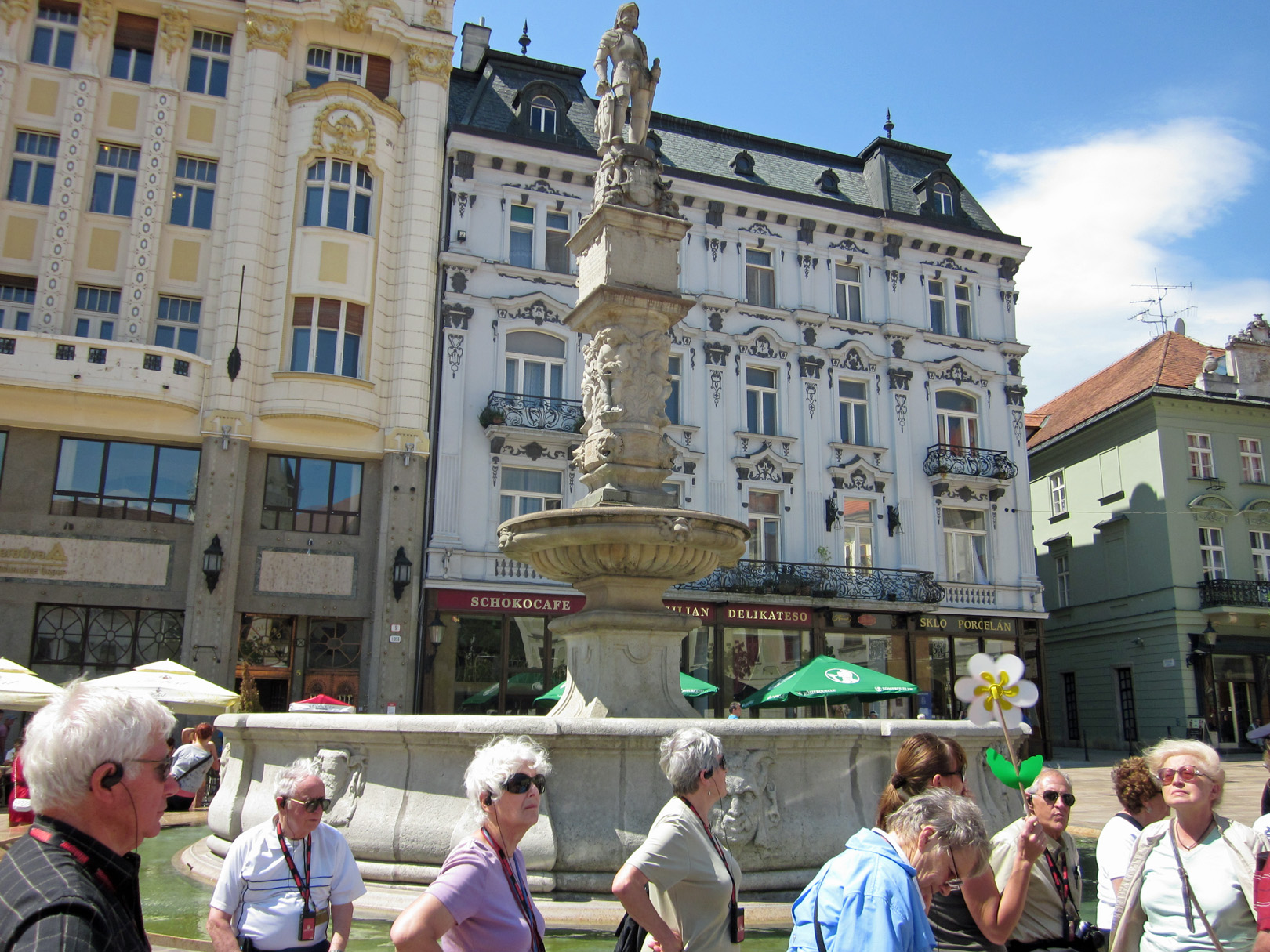
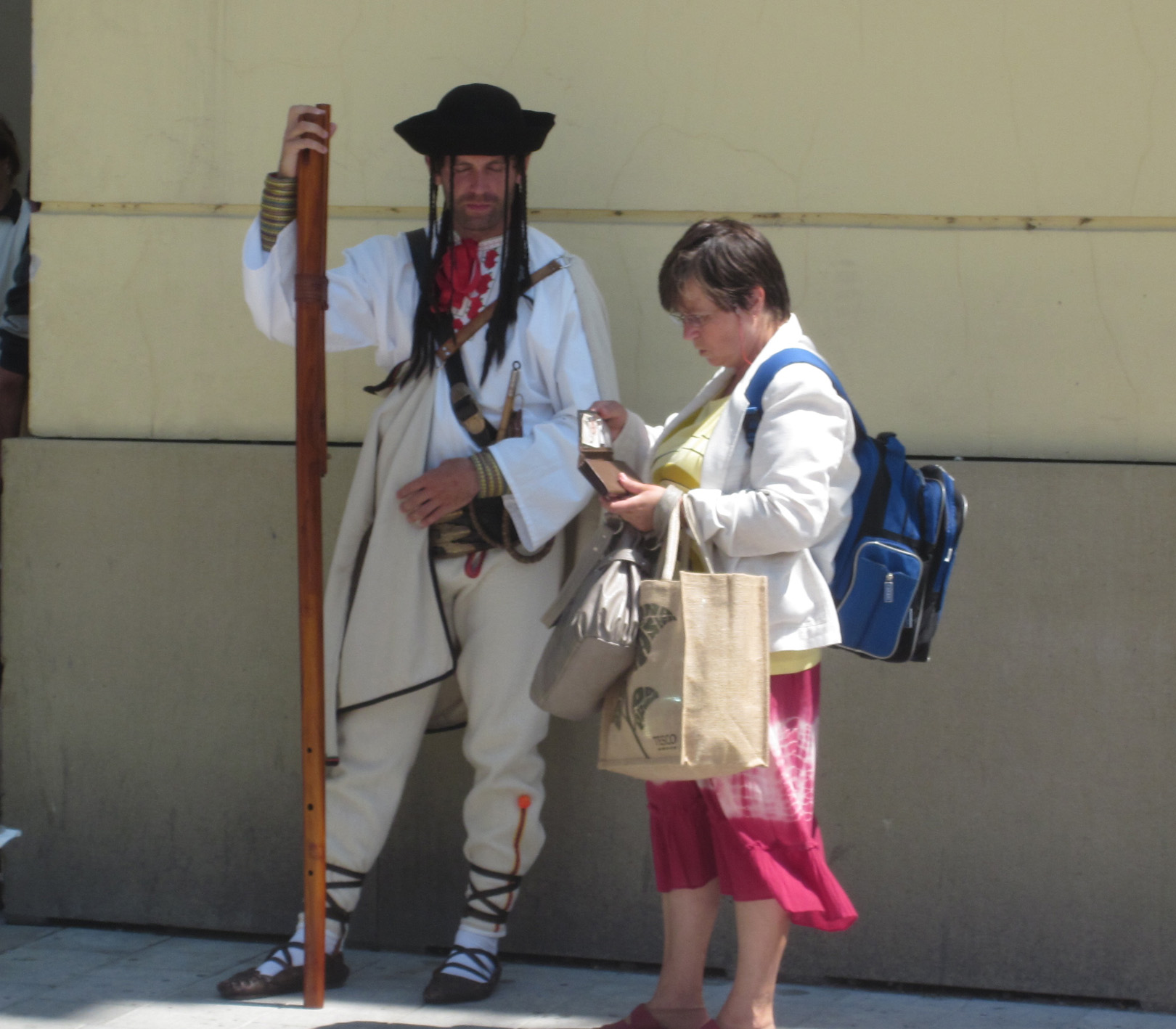

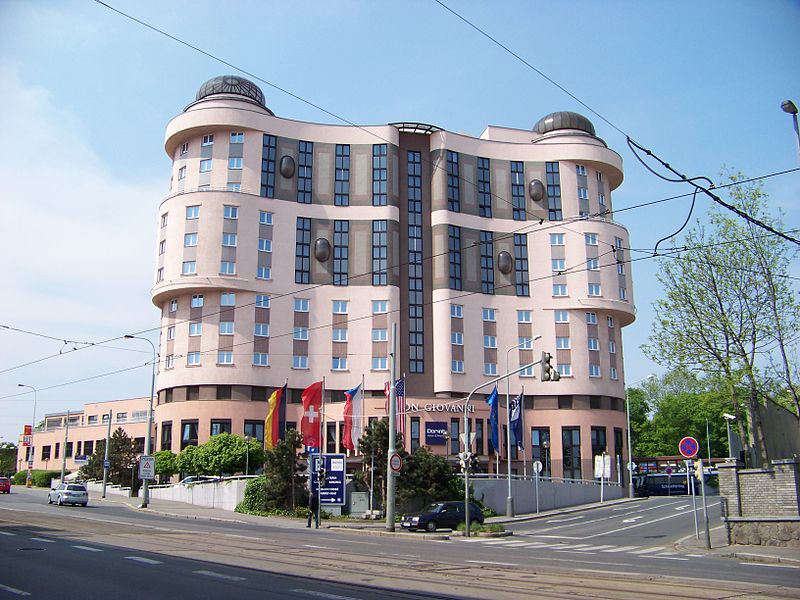
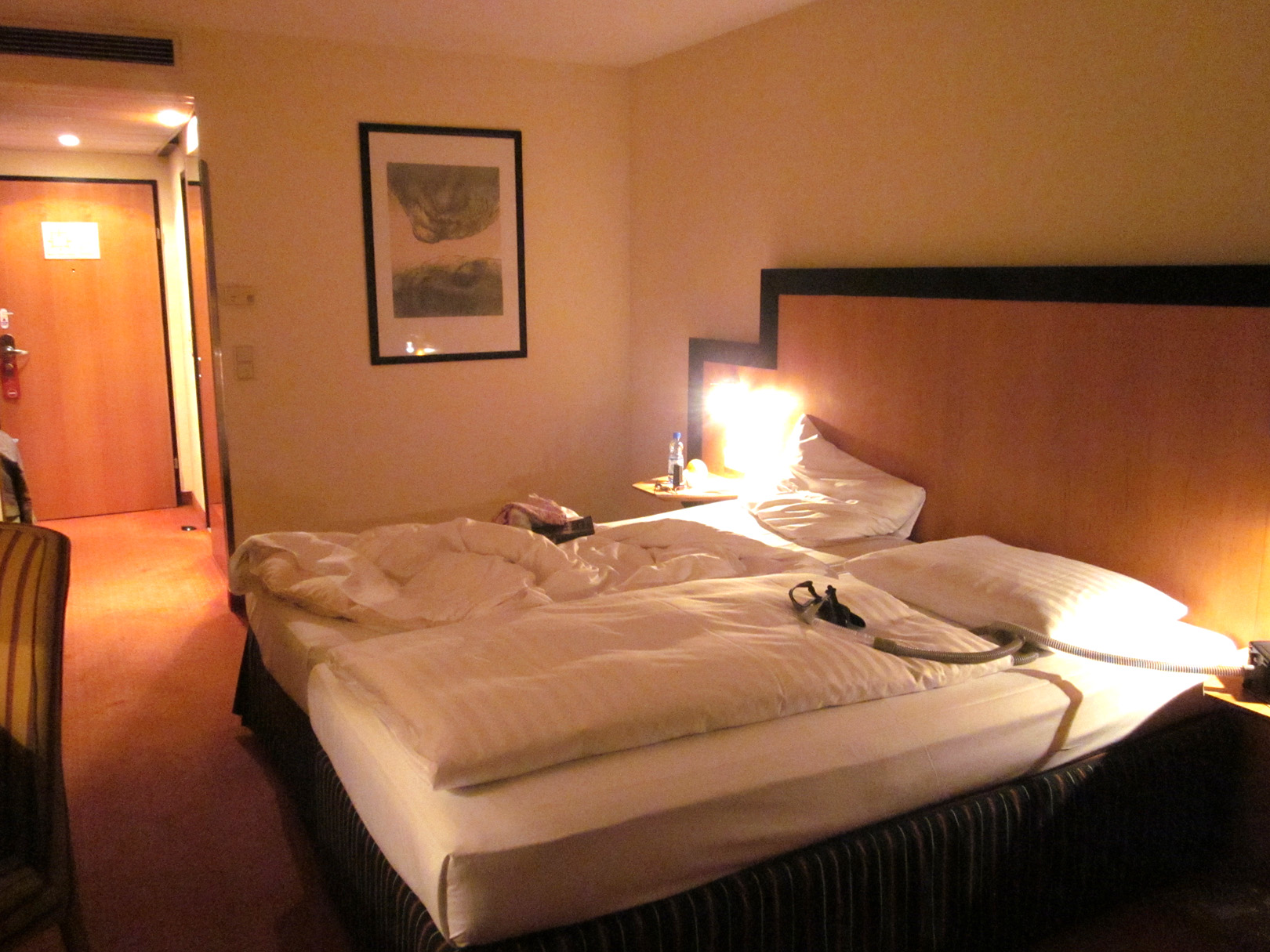
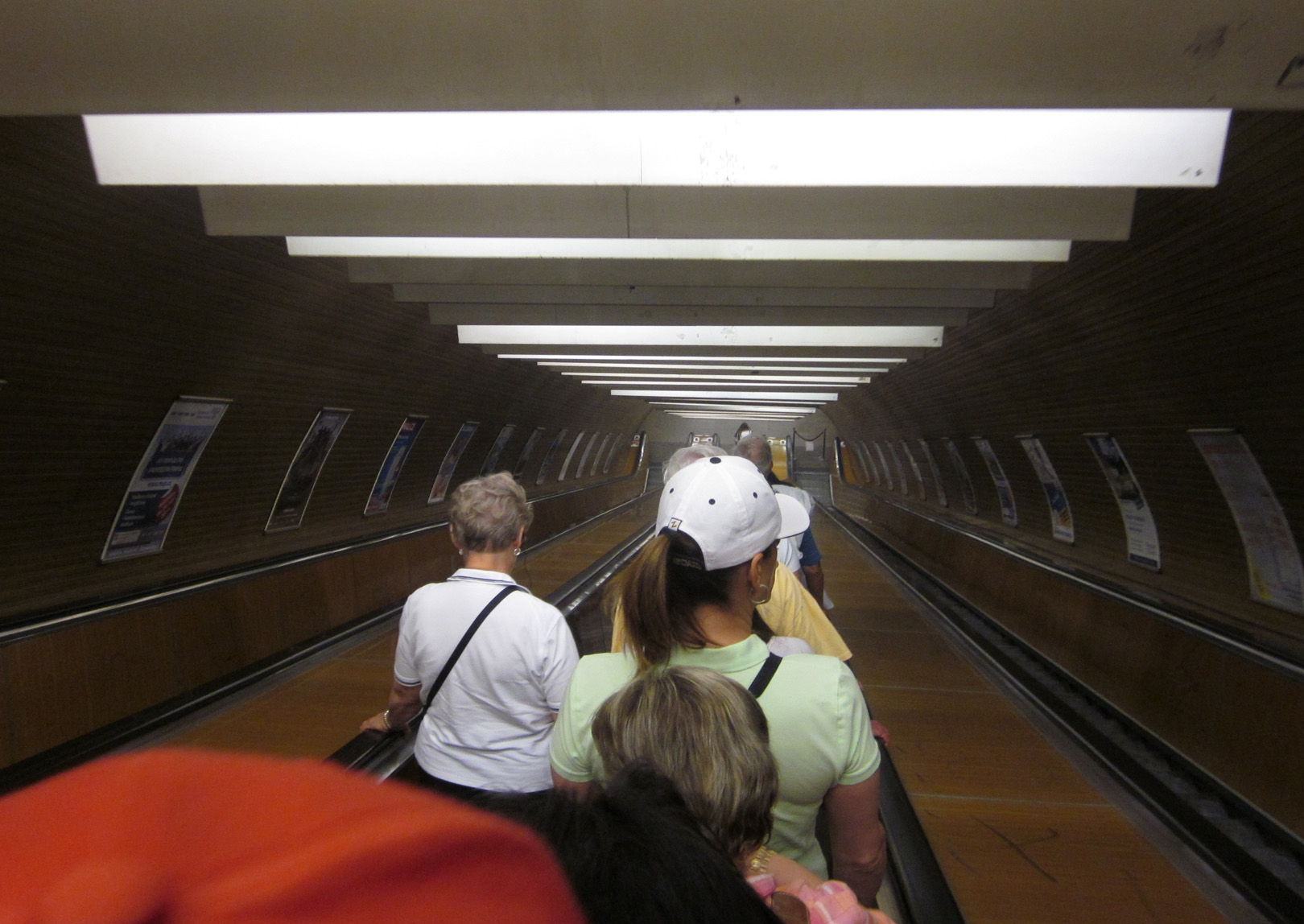
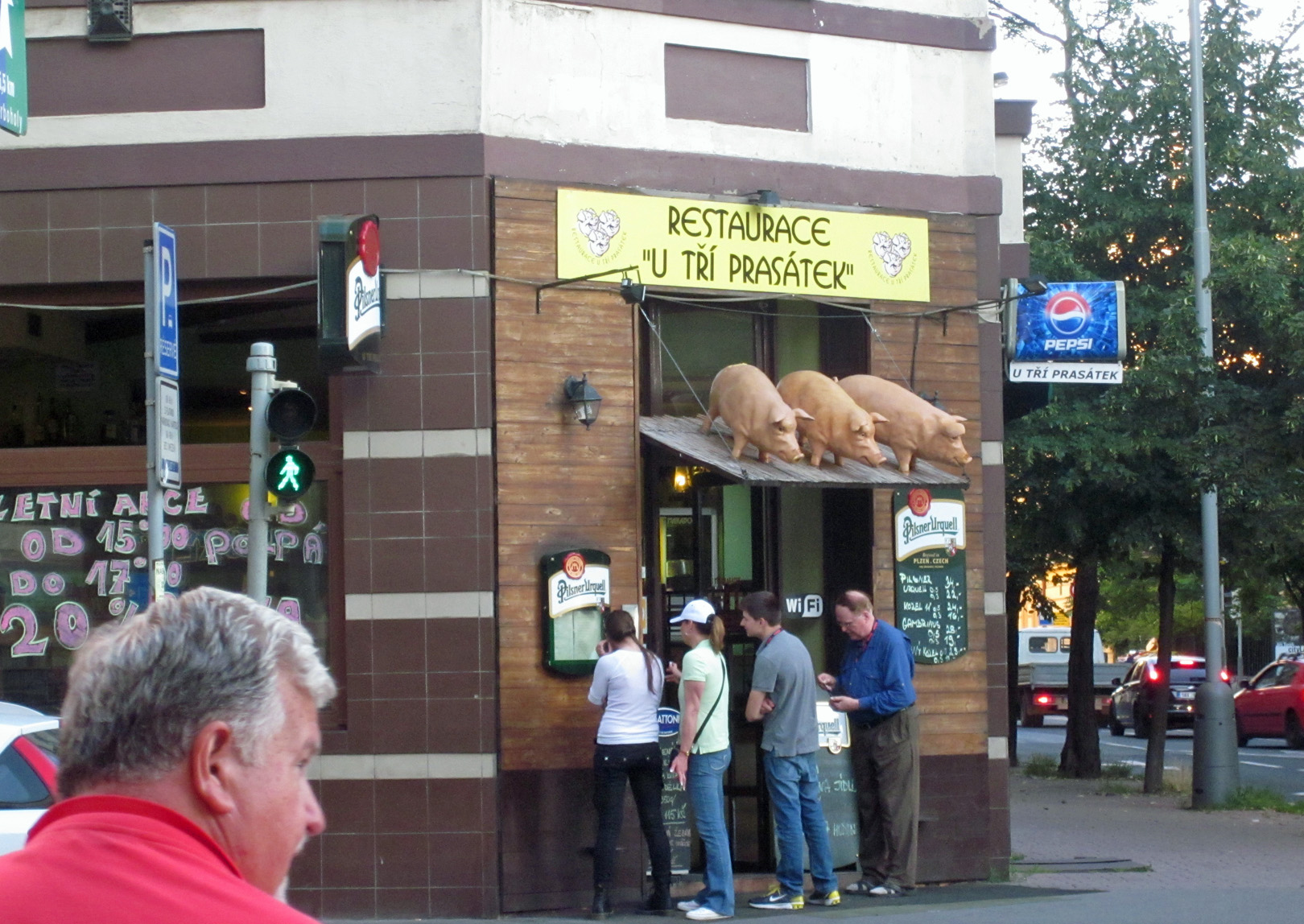

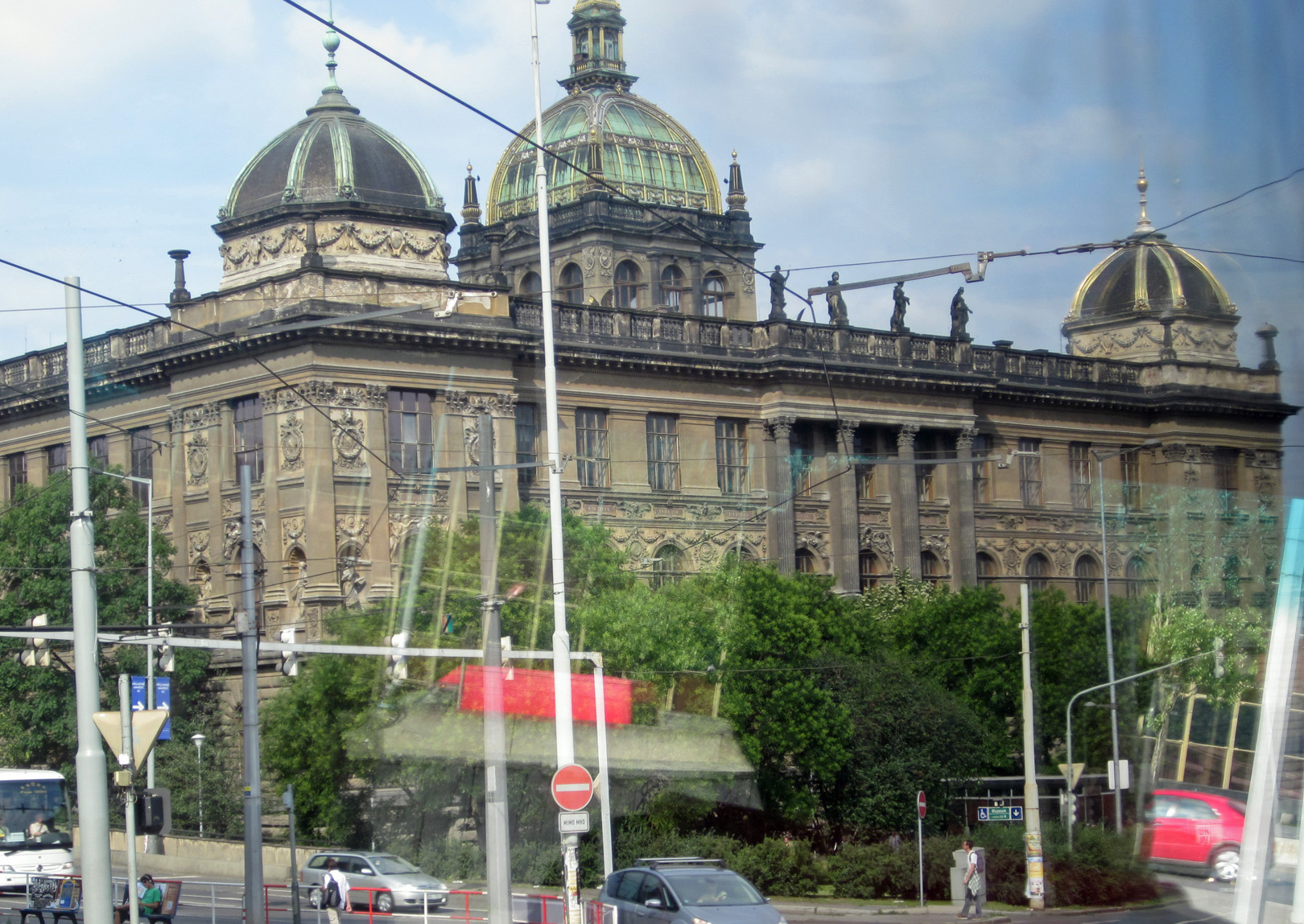
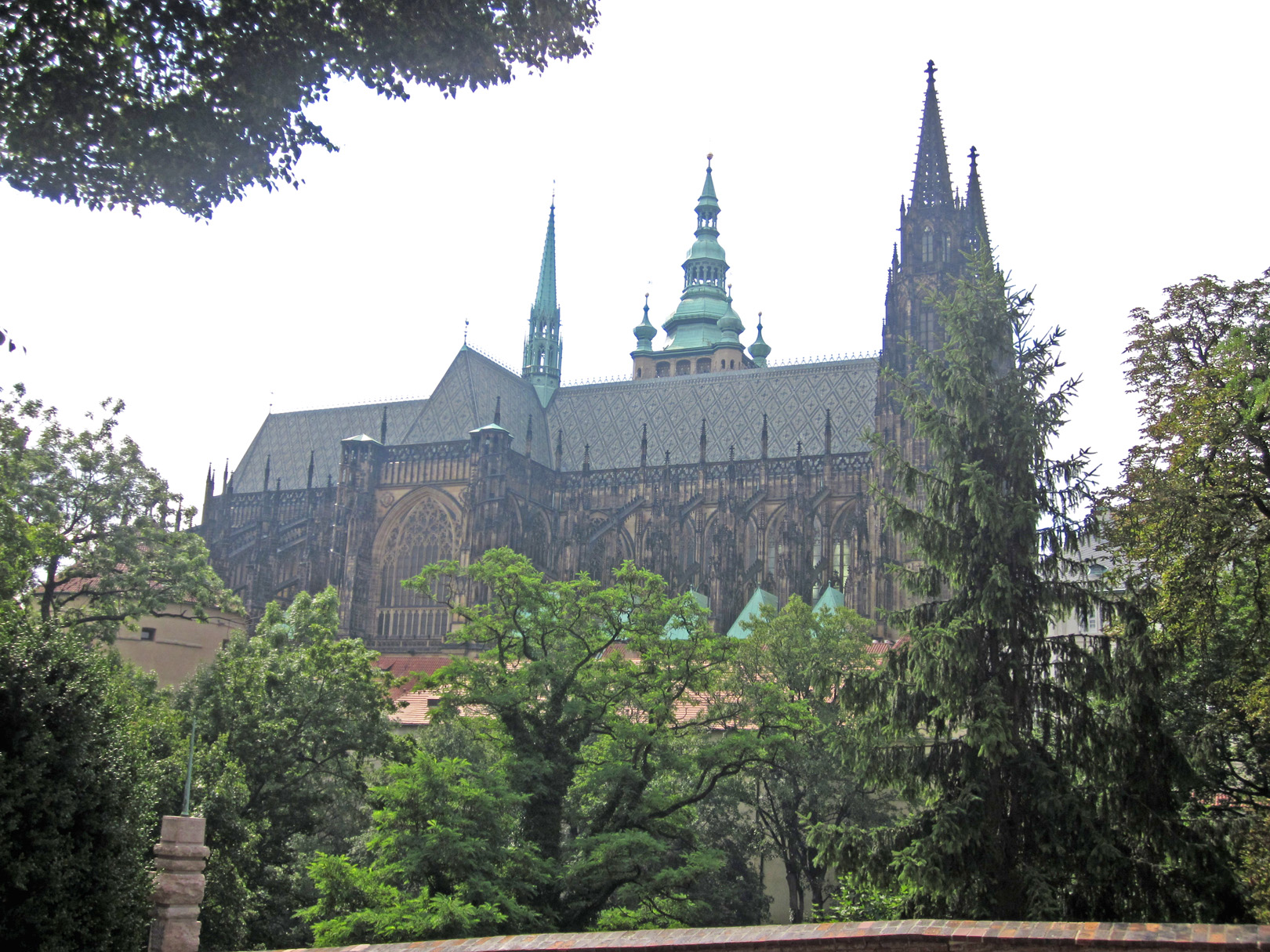
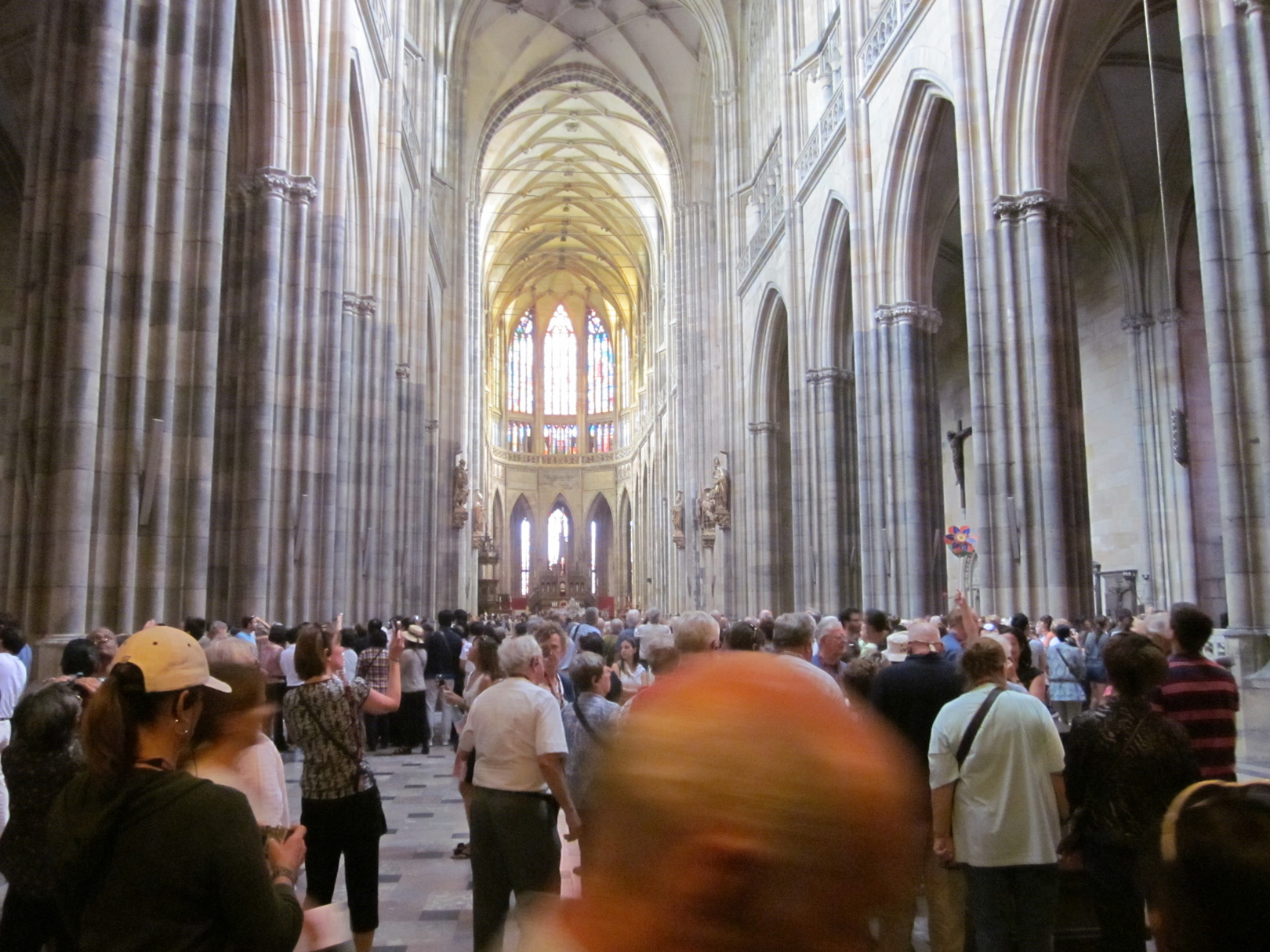
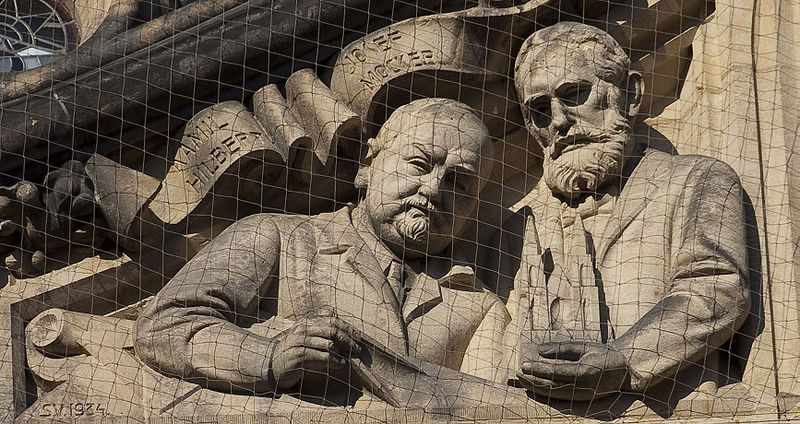

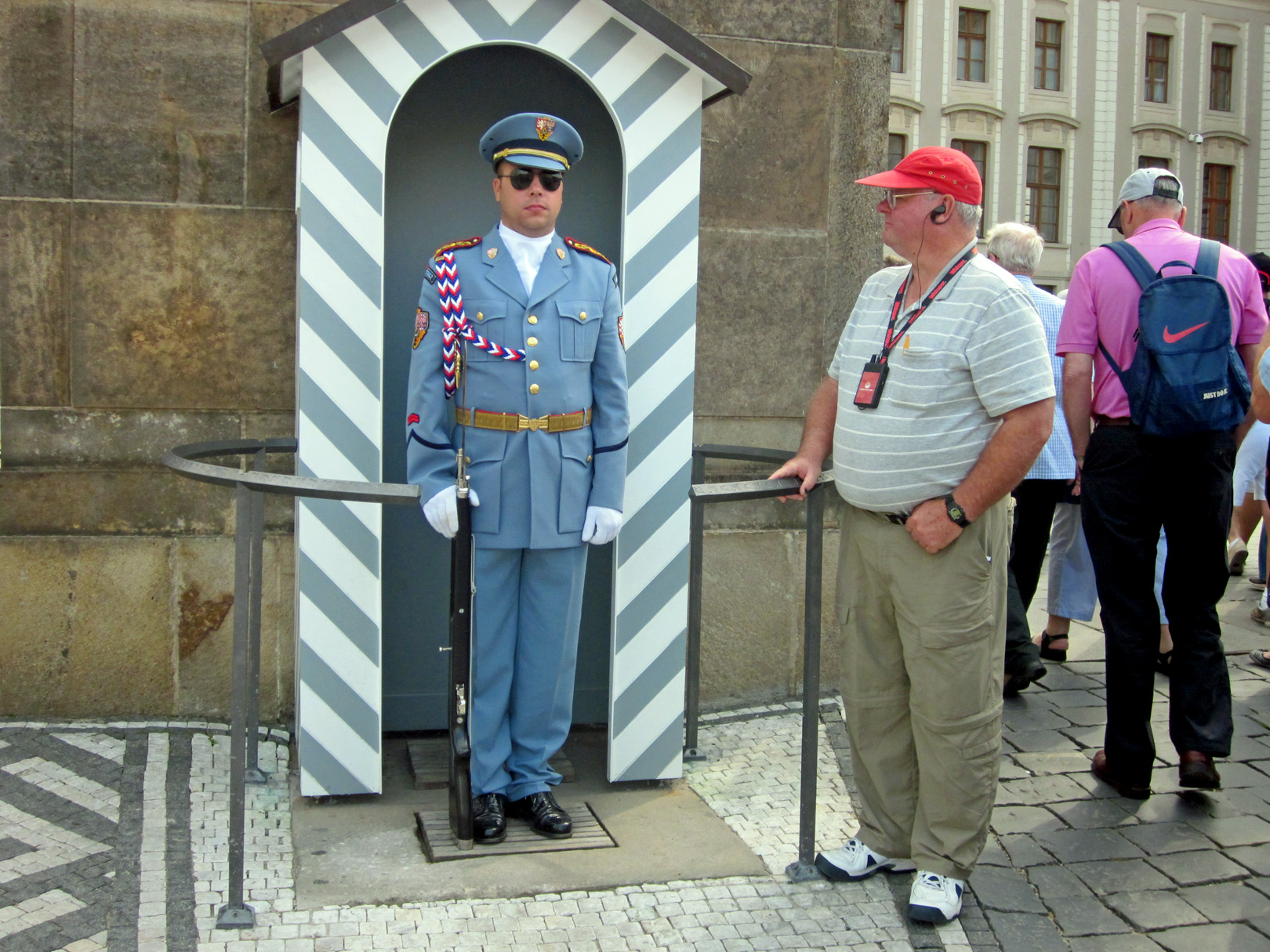
Go to Home
Go to P.2
Go to P.3
Go to P.3
Go to P.5
Go to P.6
Go to P.7
Go to P.8
Go to P.9